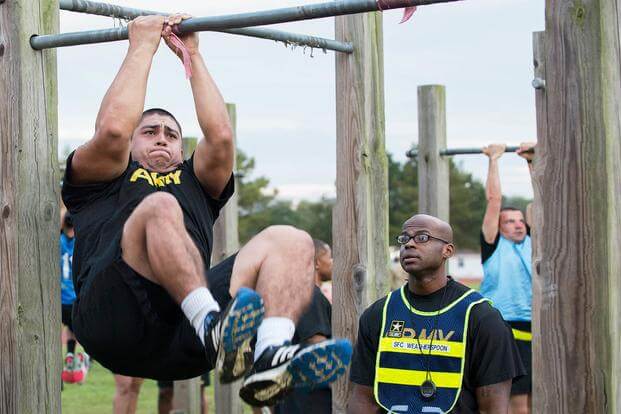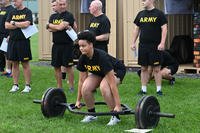Joining the military is a process. If you have previous injuries, the military medical professionals will have to review your status during the recruiting phase. Building a foundation of fitness or rebuilding after an injury requires time and smart effort. Consider a To and Through Strategy by preparing to get to the training by acing the fitness tests in your future and then focus on getting through the training by doing longer runs, rucking, lifting and still calisthenics. Consider these phases in a periodization cycle.
Stew, I am 24, a college grad with a few previous lifting injuries (lower back). For the longest time, I've wanted to join the Army Special Forces (Green Berets). Due to various circumstances, I haven't been able to pursue this. However, I have decided that I'm going to get myself in the best shape possible for the pipeline, even if that means leaving my decent-paying career. Do you think a year of physical conditioning will be enough? I'm much more mature than I was when I was a teenager, and I'm happy I have waited to mature before starting this endeavor. Thank you, Tim
Tim -- good question. Yes, a year is typically enough time to train specifically, but it depends. It depends on your current fitness level mainly and how recovered you are from previous injuries. You will need to build a foundation of strength to help your lower back. Hopefully, those injuries were just pulled muscles/not disk/nerve issues, as those may take more time.
Once you start the recruiting process, you will be asked all these questions about your medical health. If you have these medical issues in your record, surgeries, physical therapy or other ailments, they will be reviewed during your Military Entrance Processing Station, MEPS. There are military medical professionals who will screen your record and current health status.
Training to get to the training is phase 1 of your goal. Focus on the fitness test and even the new fitness tests you will see in the next year in the Army: Push-ups, sit-ups, pull-ups and two-mile runs will be tested as quick assessments, but you also will be taking the occupational physical assessment test, or OPAT. By the time you are in the Army, the new Army combat fitness test will be in full swing.
These tests require:
OPAT: long jump, seated power throw, deadlift, beep test shuttle run.
ACFT: This new fitness test will replace the push-up, sit-up and two-mile run test by 2019.
Strength deadlift. This is a three-repetition maximum deadlift to test muscular strength; it mimics movement to safety and effectively lifting and carrying heavy loads.
Standing power throw. This event involves throwing a 10-pound medicine ball as far as possible over the head and to the rear. It measures upper and lower muscular power, balance and flexibility.
Hand-raised push-ups. This event forces the soldier to go all the way to the floor and raise his hands before coming back up again, measuring upper-body muscular endurance.
A 250-meter sprint, drag and carry. This is five different events within one event: a 50-meter sprint; a backward 50-meter drag of a 90-pound sled; a 50-meter movement; a 50-meter carry of two 40-pound kettlebells; and a final 50-meter sprint. It measures muscular strength, power, speed and reaction time.
Leg tuck. A soldier hangs perpendicular to the pull-up bar and brings his knees up to his elbows and back down again for one repetition. It measures muscular strength, endurance and grip.
Two-mile run. The ACFT retains the two-mile run portion of the Army physical fitness test, which is designed to measure aerobic and muscular endurance.
Time to get on it. Start off within reason of your current running. Progress logically so you do not find yourself doing too much, too soon and wind up starting off this journey with overuse injuries. Build up your lower back and get a solid base of running (15-20 miles a week) before adding weight and rucking.
Stew Smith is a former Navy SEAL and fitness author certified as a Strength and Conditioning Specialist (CSCS) with the National Strength and Conditioning Association. Visit his Fitness eBook store if you’re looking to start a workout program to create a healthy lifestyle. Send your fitness questions to stew@stewsmith.com.
Want to Learn More About Military Life?
Whether you're thinking of joining the military, looking for fitness and basic training tips, or keeping up with military life and benefits, Military.com has you covered. Subscribe to Military.com to have military news, updates and resources delivered directly to your inbox.


















